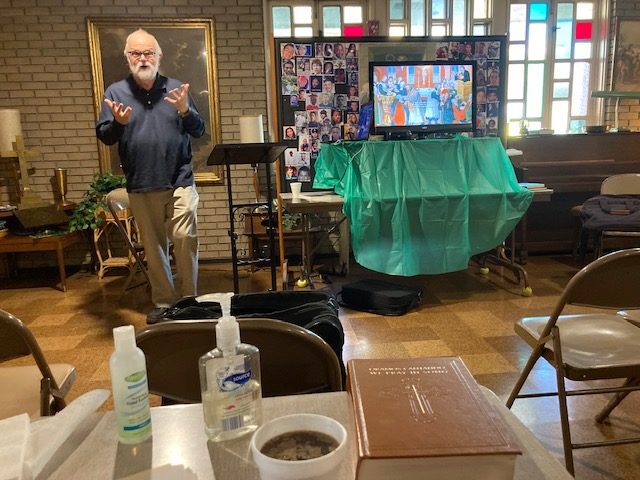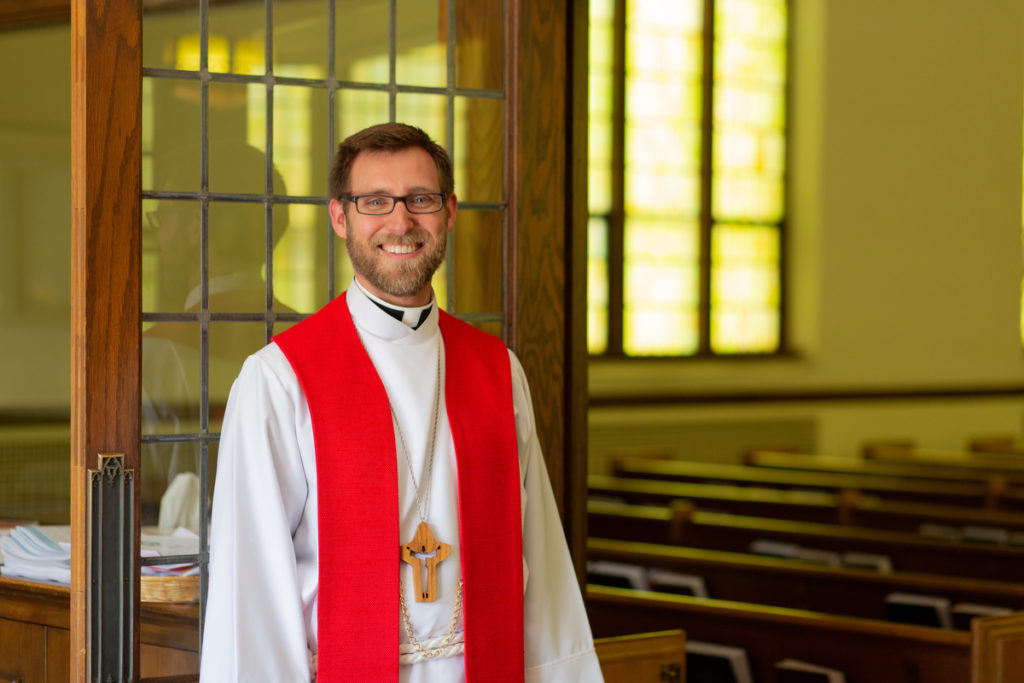Many thanks to retired ELCA pastor and former Lutheran CORE board member Keith Forni for organizing, and to St. Timothy’s Lutheran Church (ELCA) in the Hermosa neighborhood of northwest Chicago for hosting the mid-October, annual gathering called Encuentro. Encuentro is Spanish for “Encounter.” This event is co-sponsored by Lutheran CORE and the Bilingual Ministry Resource Center, which is based in Chicago and Joliet, Illinois.
Because of the pandemic this was the first time we were able to hold this event since 2019. We were all glad that we were again able to gather for teaching, worship, fellowship, and exchange of ideas on how we can be engaged in outreach to our diverse neighborhoods, particularly focusing on Spanish-speaking people.
We gave thanks to God as we heard from Pastor Forni regarding how seventy to eighty children and their parents walk by the church each day on their way to and back home from school. Members of the church hand out to the children Spanish language coloring books such as “Questions Kids Ask About God.” Local residents were invited to join us for the presentations and the delicious lunch. We remembered the beginnings of significant outreach to the community before the pandemic, and we prayed for a resumption of that response. We recalled how that outreach began with the response of one family, who invited their friends and neighbors, who in turn invited their friends and neighbors, and so on. Outreach and ministry certainly does most effectively happen through relationships.


We were blessed by and learned much from the two keynote presentations by the Rev. Dr. Maxwell Johnson, ELCA pastor and professor of theology at Notre Dame University in South Bend, Indiana. His morning presentation was on “Reclaiming the Eucharist and Great Thanksgiving in Contemporary Lutheran Worship.”
Dr. Johnson began by mentioning the misunderstanding that certainly has always been my understanding – that liturgy is the work of the people. Instead Dr. Johnson said that Christ is the prime liturgist. He is the one who performs the work on behalf of the people. Liturgy is God’s work for us, not our work for God. Our work is our deeds of service after our worship. Dr. Johnson also stressed that right from the beginning the eucharistic meal has always been central to Christian worship. He gave as an example of worship’s being both Word and sacrament Luke’s account of when Jesus joined His followers on the road to Emmaus. Jesus interpreted the Scriptures to them (Word) and His presence became known to them in the breaking of the bread (meal).
Dr. Johnson’s afternoon presentation was on “The Virgin Mary in Liturgy, Doctrine, and Life.” This presentation was particularly timely in light of the enormous impact upon the entire ELCA of spiritual and cultural insensitivities by denominational leaders towards an ELCA Latino mission in Stockton, California in the termination of their mission developer on a day that should have been a time of great celebration for them and the ending of synodical mission support.
Dr. Johnson reminded us that most people today are not naturally going to be looking for a Lutheran church home. Rather, with an increasing number of Latino people in our communities, if we want to intentionally reach our neighbors, including our Latino neighbors, then we need to find a way to embrace their symbols and images. He sees this embrace as including finding a place for Mary within our churches. He shared a very humorous but also a very insightful remark from one bishop – that it only makes sense that it is the mother in a very dysfunctional family who keeps the family together.
Dr. Johnson sees in the appearances of the Virgin to Juan Diego in 1531 the clear message that the Latino community is seen and known by God. While others may look down on them, marginalize and dismiss them, God gives them hope by showing that He cares about them, reaches out to them, and treats them with dignity.
Dr. Johnson quotes from Mary’s Magnificat as he speaks of the appearances of the Virgin to a poor peasant whose people had recently been conquered. “He has looked with favor on the lowliness of His servant. . . . He has scattered the proud in the thoughts of their hearts. He has brought down the powerful from their thrones and lifted up the lowly. He has filled the hungry with good things and sent the rich away empty.” (Luke 1: 48, 51-53) The appearances to Juan Diego were Gospel – good news for those who had nothing and no reason to hope for good news. Dr. Johnson sees the Latino people’s coming to know God’s liberating power proclaimed in the Magnificat as a gift of the Latino people to the wider church.
Dr. Johnson mentioned two books which he has written or edited which further expand on the themes he was developing – The Virgin of Guadalupe: Theological Reflections of an Anglo-Lutheran Liturgist and American Magnificat: Protestants on Mary of Guadalupe. He concluded by saying regarding Mary, “Her presence is a sign of welcome (to Latino people); her absence or the forbidding of her would be seen as a sign of rejection.” He then added, “Mary always points us to Jesus, who is the Savior.”


























